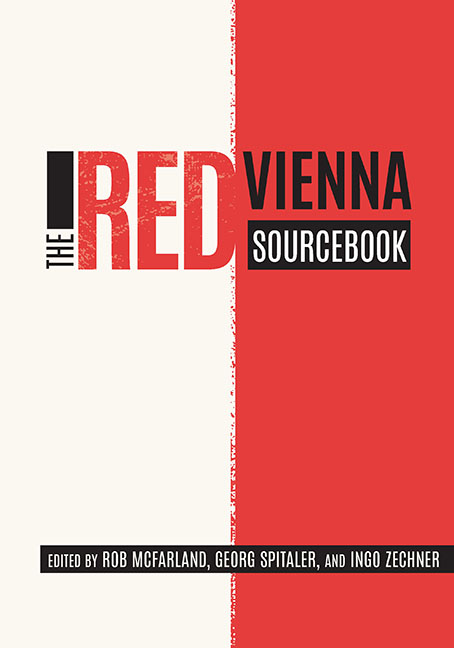Book contents
- Frontmatter
- Contents
- Acknowledgments
- Permissions and Credits
- A Note on the Structure of This Book
- Introduction
- Part I Foundations
- Part II Philosophies
- Part III Identities
- Part IV New Values
- Part V Social Engineering
- Part VI Vitality
- Part VII Housing
- Part VIII Cultural Politics
- Part IX Mass Media
- Part X Exchange
- Part XI Reaction
- Part XII Power
- Chronology
- References
- Contributors
- Index of Subjects
- Index of Persons
Chapter 35 - Communication and Propaganda
Published online by Cambridge University Press: 23 October 2020
- Frontmatter
- Contents
- Acknowledgments
- Permissions and Credits
- A Note on the Structure of This Book
- Introduction
- Part I Foundations
- Part II Philosophies
- Part III Identities
- Part IV New Values
- Part V Social Engineering
- Part VI Vitality
- Part VII Housing
- Part VIII Cultural Politics
- Part IX Mass Media
- Part X Exchange
- Part XI Reaction
- Part XII Power
- Chronology
- References
- Contributors
- Index of Subjects
- Index of Persons
Summary
THE MODERN USAGE of the term propaganda is heavily laden with negative connotations, as it is associated with the manipulative spread of falsehoods and harmful ideologies. However, in the 1920s and 1930s, propaganda was a positive term, and of great theoretical importance to the Social Democratic Workers’ Party (Sozialdemokratische Arbeiterpartei, SDAP). Willi Münzenberg, speaking from the rival German communist perspective, explained that “in contrast to the contemptuous judgment of bourgeois groups, the word propaganda in the socialist terminology means something great, valuable, spiritual, scientific.” Propaganda, agitation (also a positive term in this context), education, and enlightenment are all related, and integral to an understanding of the party workings during the period of Red Vienna.
There are two primary threads concerning propaganda and communication: the efforts of the SDAP within the city to educate the masses and run campaigns and the international “city marketing” efforts of Red Vienna (or, as the Social Democratic city representatives often preferred, New Vienna) to present itself as an example of a social democratic metropolis to the world. Internationally published books, such as Robert Danneberg's Zehn Jahre Neues Wien (The New Vienna, 1929) or Hermann Kosel’s famous tourism posters, cultivated a distinct identity for the city, an image with political meaning and cultural capital. Vienna's architecture also played a significant role, combining ideological importance with marketing potential. The ambitious building program and architectural style provided much-needed public housing and were also visually distinctive and recognizable, ideal for use in advertising the city's progress and successes.
The goal of this chapter is to shed light on the communication and propaganda efforts of the SDAP, which were multimedial in a truly modern sense. This was innovative but also necessary to match the organizational scope and ambition of a party looking to shape the culture and worldview of the Viennese. Heinrich Faludi, a Viennese PR-expert for the city's publicity company Gewista and later on involved with the Austrian Research Center for Economic Psychology (Österreichische Wirtschaftspsychologische Forschungsstelle), wrote that propaganda should “take possession of the cityscape,” from leaflets, posters, and wall newspapers (newspaper clippings posted for the benefit of those too poor to buy a newspaper) to choirs, films, and cabaret performances.
- Type
- Chapter
- Information
- The Red Vienna Sourcebook , pp. 689 - 706Publisher: Boydell & BrewerPrint publication year: 2019

